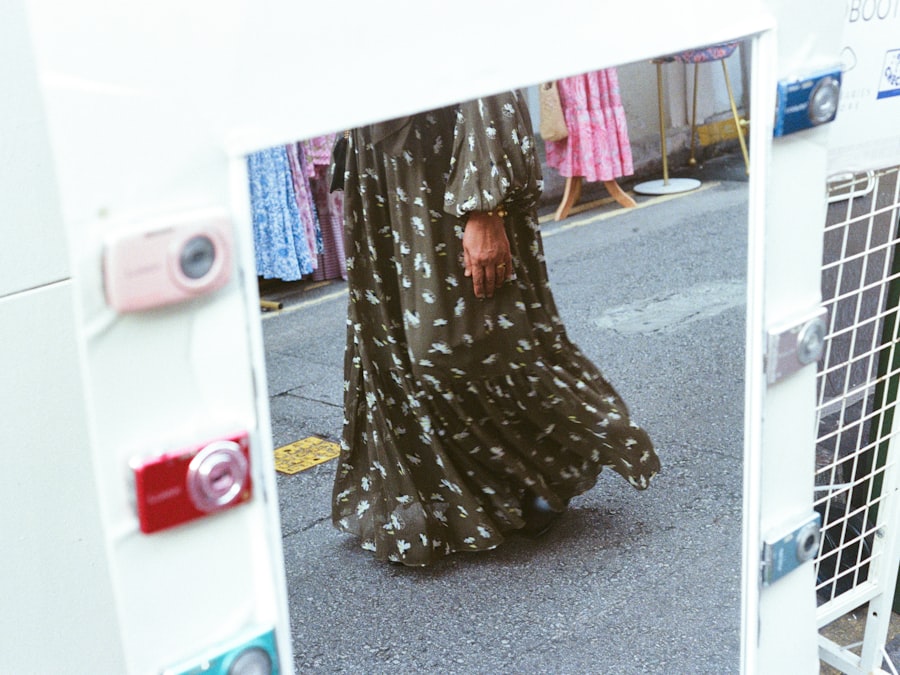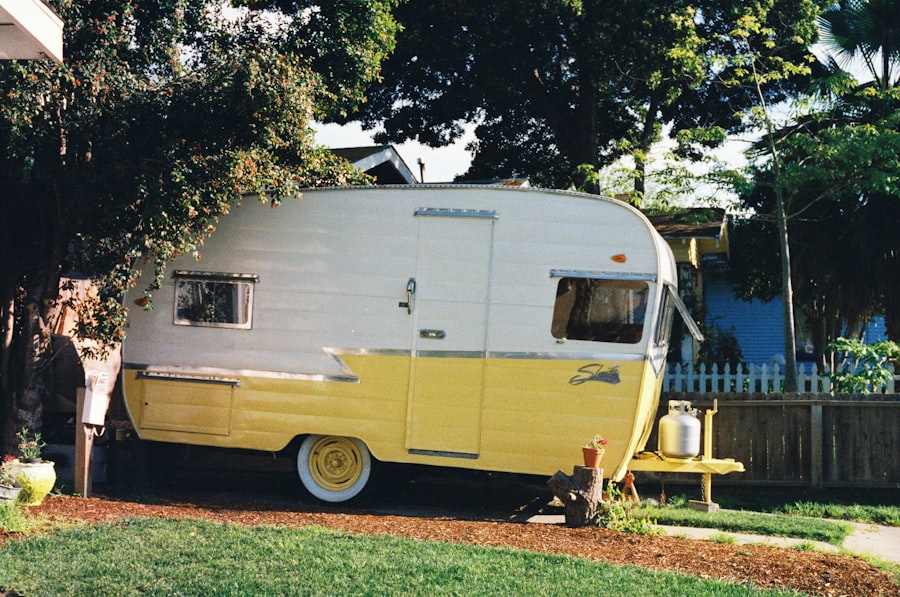A mobile home skirt, often referred to as a skirting system, is a protective barrier that encloses the space beneath a mobile or manufactured home. This enclosure serves multiple purposes, including aesthetic enhancement, insulation, and protection against pests and weather elements. Typically made from various materials, mobile home skirts can be designed to match the exterior of the home, providing a seamless look that integrates with the overall architecture.
The skirt is installed around the perimeter of the home, covering the foundation and any exposed underbelly components, such as plumbing and electrical systems. The primary function of a mobile home skirt is to create a barrier that prevents cold air from entering the space beneath the home during winter months, which can help maintain a more stable indoor temperature. Additionally, it acts as a shield against debris, animals, and insects that might seek shelter in the undercarriage of the home.
By enclosing this area, homeowners can also reduce the risk of moisture accumulation, which can lead to mold growth and structural damage over time.
Key Takeaways
- A mobile home skirt is a barrier installed around the bottom of a mobile home to conceal the structural elements and provide insulation.
- Adding a skirt to your mobile home can improve energy efficiency, protect against pests, and enhance the overall appearance of the home.
- Mobile home skirts come in various styles and materials, including vinyl, metal, and concrete, offering different levels of durability and aesthetic appeal.
- When choosing a skirt for your mobile home, consider factors such as climate, budget, and desired maintenance level to make the right decision.
- While DIY installation can save money, professional installation ensures proper fit and durability; maintaining and cleaning the skirt is essential for long-term functionality and curb appeal.
Benefits of Adding a Skirt to Your Mobile Home
One of the most significant benefits of adding a skirt to your mobile home is improved energy efficiency. By insulating the underbelly of the home, a skirt helps to regulate temperature fluctuations, reducing heating and cooling costs. This is particularly important in regions with extreme weather conditions, where homes can experience significant temperature variations.
A well-installed skirting system can lead to lower utility bills and a more comfortable living environment. In addition to energy efficiency, mobile home skirts enhance the overall appearance of the property. Aesthetically pleasing skirting can transform a mobile home from a utilitarian structure into an attractive residence.
With various styles and materials available, homeowners can choose a skirt that complements their home’s design and landscaping. This visual upgrade not only boosts personal satisfaction but can also increase property value, making it a worthwhile investment for many homeowners.
Different Styles and Materials for Mobile Home Skirts

Mobile home skirts come in an array of styles and materials, allowing homeowners to select options that best suit their needs and preferences. Common materials include vinyl, metal, wood, and concrete blocks. Vinyl skirting is popular due to its affordability, durability, and low maintenance requirements.
It is available in various colors and textures, making it easy to match with existing home exteriors. Metal skirting offers a more robust option that can withstand harsh weather conditions. It is often used in areas prone to high winds or heavy snowfall.
While metal skirts may require more maintenance to prevent rusting, they provide excellent protection against pests and environmental damage. Wood skirting provides a classic look but requires regular upkeep to prevent rot and insect damage. Concrete blocks are another option that offers durability and stability; however, they may not provide the same aesthetic appeal as other materials.
How to Choose the Right Skirt for Your Mobile Home
| Skirt Type | Pros | Cons |
|---|---|---|
| Vinyl Skirting | Durable, easy to install, variety of colors | May crack in extreme cold, can be more expensive |
| Metal Skirting | Strong, fire-resistant, low maintenance | May rust over time, limited color options |
| Concrete Skirting | Durable, provides insulation, pest-resistant | Expensive, difficult to install, limited design options |
| Wood Skirting | Natural look, customizable, relatively affordable | Prone to rot, requires regular maintenance |
Choosing the right skirt for your mobile home involves considering several factors, including climate, budget, and personal style preferences. First and foremost, assess the climate in your area. If you live in a region with extreme temperatures or severe weather conditions, opting for a more durable material like metal or concrete may be wise.
Conversely, if you reside in a milder climate, vinyl or wood may suffice. Budget is another critical consideration when selecting a skirting system. While vinyl is generally the most cost-effective option upfront, it’s essential to factor in long-term maintenance costs as well.
Some materials may have higher initial costs but could save money over time due to their durability and lower maintenance needs. Additionally, consider the style of your mobile home; selecting a skirt that complements its design will enhance curb appeal and create a cohesive look.
DIY vs Professional Installation: Pros and Cons
When it comes to installing a mobile home skirt, homeowners often face the decision between tackling the project themselves or hiring professionals. DIY installation can be an appealing option for those who are handy and want to save on labor costs. It allows for greater control over the project timeline and can be a rewarding experience for those who enjoy home improvement tasks.
However, DIY installation requires careful planning and execution; improper installation can lead to issues such as gaps that allow pests to enter or inadequate insulation. On the other hand, professional installation offers several advantages. Experienced contractors have the knowledge and tools necessary to ensure that the skirting is installed correctly and securely.
This can provide peace of mind for homeowners who may not feel confident in their skills or who want to avoid potential pitfalls associated with DIY projects. However, hiring professionals comes with added costs that may not fit every budget. Weighing these pros and cons is essential for making an informed decision that aligns with your capabilities and financial situation.
Maintaining and Cleaning Your Mobile Home Skirt

Proper maintenance and cleaning of your mobile home skirt are crucial for ensuring its longevity and effectiveness. Regular inspections should be conducted to check for any signs of damage or wear, such as cracks in vinyl or rust on metal skirts. Addressing these issues promptly can prevent more significant problems down the line.
For instance, if you notice any gaps or holes in the skirting material, sealing them quickly will help keep pests at bay. Cleaning your mobile home skirt is also essential for maintaining its appearance and functionality. Depending on the material used, cleaning methods may vary.
Vinyl skirts can typically be washed with soap and water using a soft brush to remove dirt and grime. Metal skirts may require special cleaners to prevent rust while ensuring they remain visually appealing. For wood skirts, periodic sealing or painting may be necessary to protect against moisture damage and maintain their aesthetic appeal.
Enhancing Curb Appeal with a Stylish Skirt
A mobile home skirt can significantly enhance curb appeal when chosen thoughtfully. The right skirting not only serves functional purposes but also adds character to your home’s exterior. Homeowners can opt for decorative elements such as latticework or custom designs that reflect their personal style while still providing necessary protection.
For instance, incorporating planters or decorative stones around the base of the skirt can create an inviting atmosphere. Color selection plays a vital role in enhancing curb appeal as well. Choosing colors that complement the mobile home’s exterior paint can create a harmonious look that draws attention positively.
Additionally, homeowners might consider adding landscaping features such as shrubs or flowers near the skirting area to further enhance visual interest. By investing time in selecting an attractive skirting option and surrounding landscape features, homeowners can create an inviting environment that stands out in their neighborhood.
Cost Considerations for Adding a Skirt to Your Mobile Home
When planning to add a skirt to your mobile home, understanding the associated costs is essential for budgeting effectively. The price of skirting materials varies widely based on factors such as type, quality, and brand. Vinyl skirting typically ranges from $1 to $3 per linear foot, making it one of the most affordable options available.
In contrast, metal skirting can cost between $3 to $6 per linear foot due to its durability and resistance to environmental factors. In addition to material costs, homeowners should also consider installation expenses if they opt for professional help. Labor costs can vary based on location and contractor rates but generally range from $50 to $100 per hour.
If you choose to install the skirting yourself, you may save on labor costs but should still account for tools and supplies needed for proper installation. Overall, budgeting for both materials and potential labor will ensure that you are prepared for this investment in your mobile home’s appearance and functionality.

